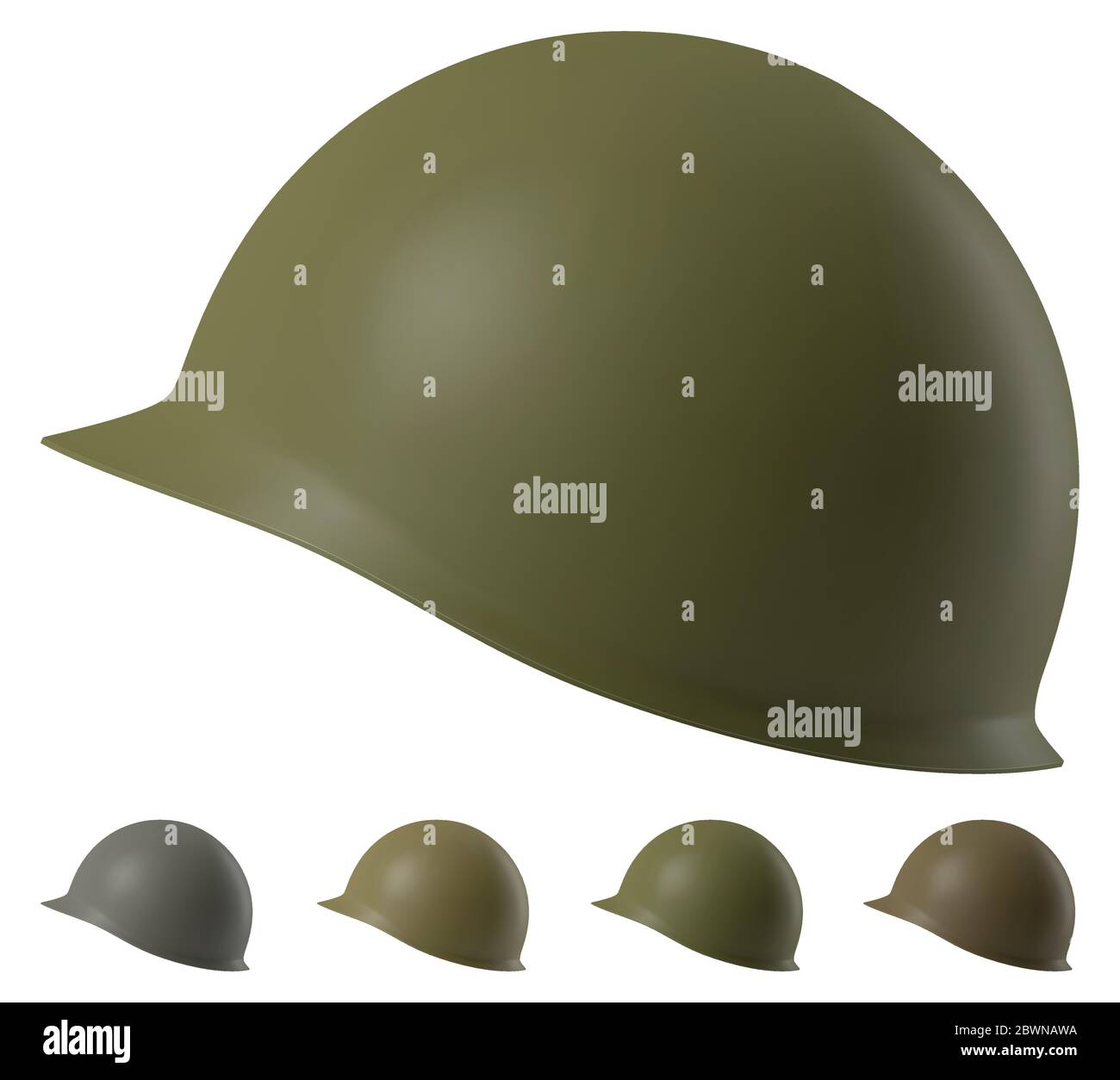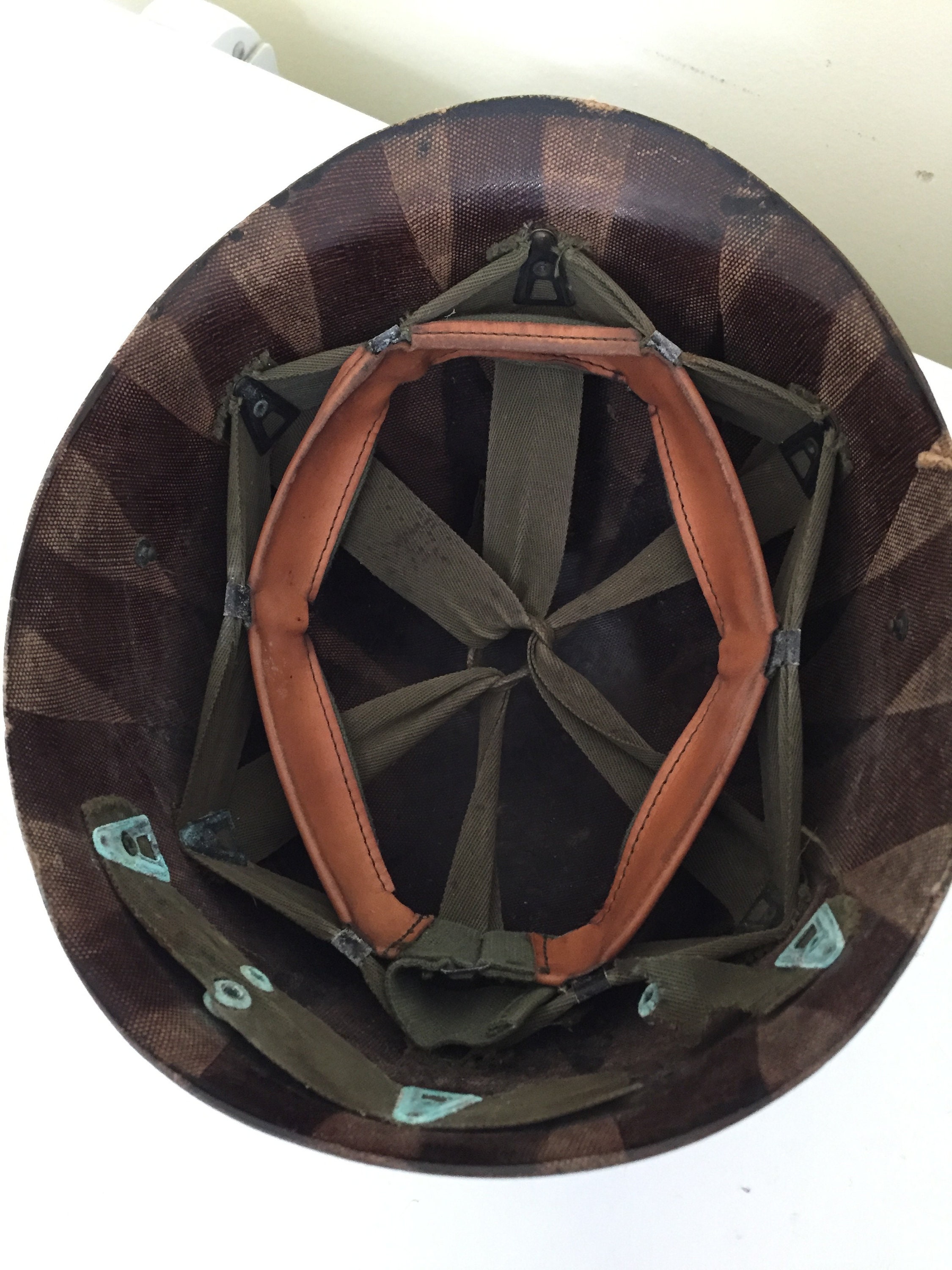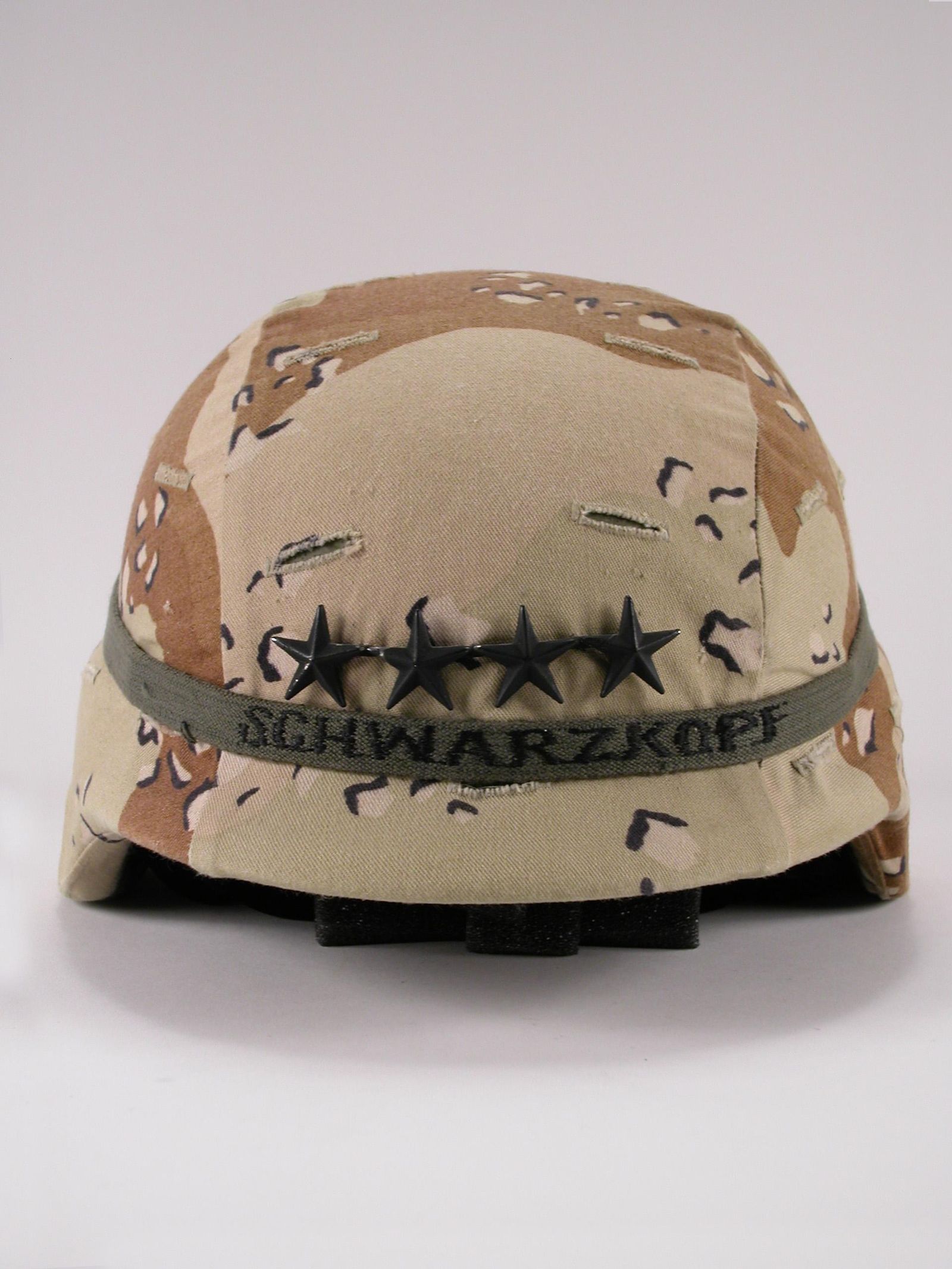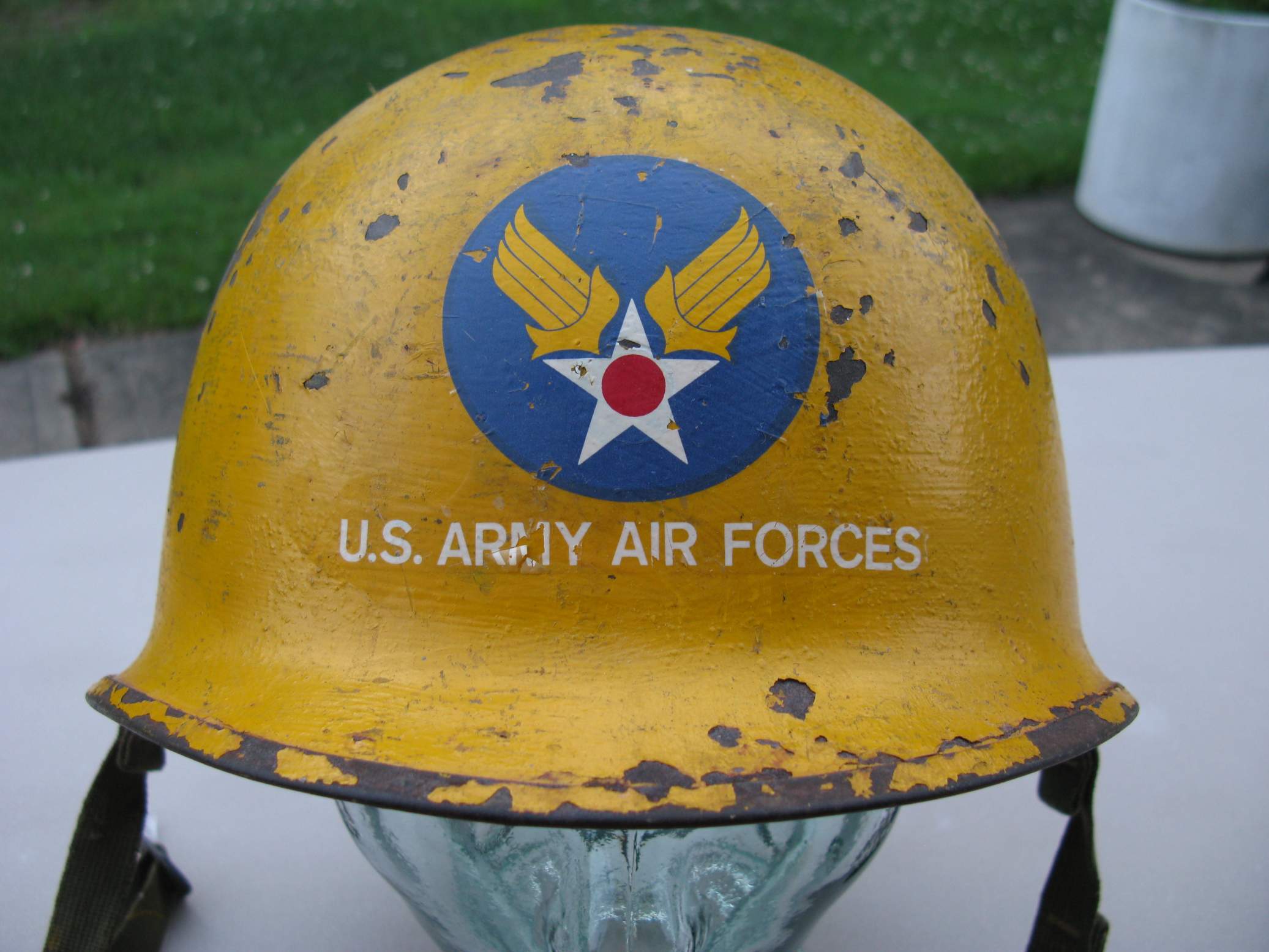Us Army Helmet Ww2 - The M1 helmet is an iconic piece of military equipment and was a combat helmet used by the United States Army from World War II until 1985. The M1 helmet was adopted by the United States Army in 1941 to replace the obsolete World War I Brodie helmet in British lands. style from the era.
The M1 helmet is a combination of two universal helmet layers - the first is an outer metal shell, sometimes called a "steel pot", and the second is a helmet-style liner with an adjustable suspension and cushioning system inside. In addition, helmet covers and netting can be attached by covering the steel shell with additional material, which is pushed into the shell and secured by inserting a liner. Early liners were made from a mixture of compressed paper fibers impregnated with phenolic resin, with an olive gray cotton twill stretched over the outside. Their production was quickly discontinued in November 1942 as they were found to degrade rapidly in high temperature and high humidity. They were replaced by evolving plastic liners that changed their design and composition over the years.
Us Army Helmet Ww2

The outer shell was not intended to be used alone, although the design of the bowl-shaped shell led to new uses for soldiers. When separated from the shell, the shell can be used as a digging tool, hammer, sink, bucket, bowl and seat. The shell was also sometimes used as a cooking vessel, but officers discouraged the practice because the heat made the alloy brittle. The liner can be worn alone, providing protection similar to a construction helmet, and is often worn by military police and various non-frontline military personnel.
Vintage Wwii M1 Helmet Liner Us Army Helmet Liner Military
Quick Shop 4 in 1 Knife Fork Spoon Can Opener Set Heavy Duty KFS Chow Kit Includes AMC Camo Case $24.95 $27.90 Sale
4 in 1 Knife Fork Spoon Can Opener Heavy Duty KFS Chow Kit Includes AMC Camo Pouch Two WWII soldiers on smoke break in M1 helmet. The soldier on the right is wearing a helmet with late-model helmet netting and flexible leaf band, while the soldier on the left shows the usual paint loss on the rim of the helmet.
How many times has someone handed you a gray olive shell and asked you, "Is that a World War II helmet?"
Few questions arouse as many opinions as this frequently asked question at fairs, auctions or online forums. Sometimes the people answering the question seem to be trying to outdo others by making the assessment too complicated.
Wwii M1 Helmet
In order to accurately determine if an M1 helmet and cowl is WWII, it is important to know the basic production characteristics of the helmet and cowl. Over time, there have been many new changes to the specifications. The collector should note that when new specifications become available, old models are usually used in the production of new model specifications for each part of the helmet.
Approximate dates on WWII helmet stamps cannot always be made as some are illegible. So it is normal for odd combinations like fiber lining with herringbone suspension. This can lead to very interesting combinations, both historically and informatively.
This article provides the new collector with a step-by-step process for determining the vintage of a WWII M1 helmet. The specific production features of WWII M1 helmets are described, as well as dates corresponding to the time of specification changes. Attention is drawn to alerting the Collector of post WWII changes due to technical changes applied to helmets originally manufactured during WWII.

McCord was the first and largest manufacturer of WWII M1 helmet shells. They were also marked with an alphanumeric stamp in the same place Shlueter made the helmets, but had no other identifying marks.
Late Wwii Swivel Loop Schlueter M1 Helmet Shell (1945)
Ed Goepinger poses in front of a German building on his 20th birthday, April 19, 1945, wearing his mesh-covered M1 steel helmet.
The first production M1 helmet shell was introduced shortly before the United States entered World War II and was made of manganese steel coated with capstone and dark olive gray paint. This combination gives the helmet a dark, rough look and texture.
The alphanumeric stamp is located on the bottom edge of the helmet, where the helmet widens towards the edge. The stamp may be difficult to see, but it can identify the manufacturer and approximate year of manufacture.
These features are common to all WWII helmets and were never changed during the war. Over time, some shells have developed stress cracks that can range from surface cracks to penetrating helmet cracks, which are normal for the age of original WWII helmets, but detract from the helmet's value. For this reason, all M1 helmets from World War II through the Vietnam War must be handled with care to reduce the chance of damage.
Wwii Ww2 Replica Us Paratrooper M1 Double Layer Helmet Outdoor Cs Survival Collection Replica Helmet Us114041
Initial production helmets between 1941 and 1944 had forward-facing rims. All M1 helmets with this feature were produced during or just before World War II. In November 1944, the seam was moved to the back of the helmet.
The rims of these two carbine-equipped soldiers' helmets are bright with paint coming off the steel rims.
A "seam" refers to the point where the ends of the metal strip that protects the bottom edge of the helmet meet. From 1941 until the end of 1944, the seam was found on the front center edge of the steel helmet.

The rim was made of stainless steel, which did not rust, but did shine a little too much when exposed, as paint usually does not hold up well in constant contact with hard surfaces. In 1944, an attempt was made to solve the problem of excessive shine of the rim's bare metal by changing the rim's material to manganese steel. In November 1944, the seam was moved 180 degrees to the rear edge of the helmet.
Sold Us Army M1 Helmet Shell Front Seam Swivel Bale
Originally, chinstraps were sewn into fixed loops. This feature is fitted to all front and early rear seams. The fixed eyelets were a weak point in the design of the helmet, as the eyelets were in constant contact with the surface. So many broke that they were replaced by a swivel loop with beard strap mounts in 1943.
Metal rings (often called "guarantees" by collectors) attach the chinstraps to the helmet. From 1941 to the end of 1943, these loops were welded directly to the left and right sides of the helmet. In collecting terms, these are called "fixed chains".
Fixed eyelets were stiff and tended to break from the helmet. In late 1942, the "rotating loop" was introduced, an improvement so successful that it was retained in all future production of the M1 helmet until it was phased out in the mid-1980s. The Airborne used a fixed semicircular loop for most of the war, but also used a standard swivel loop until the end of the war.
From 1941 to the end of 1943, chinstraps were made of olive gray No. 3 cotton webbing (above). It is available in various shades from khaki to light green. Although shade number three was officially retired in 1943, it was used after 1943 until supplies ran out. The decision to adopt the shade of field equipment material to a darker olive gray number seven (below) was made in late 1943. It is usually found sewn into helmet shells at the rear seam.
Wwii Us Army M1 Fixed Bail Medic Helmet
The chinstraps of all WWII infantry helmets were sewn into the loops described above. They were originally painted olive gray number three, which was technically a greenish khaki, but in practice it was produced in various shades from khaki to greenish khaki.
In 1943, it was decided to stop Olive Drab no. 3 olive gray no. 7 or dark olive gray. By the end of 1944, a new color change was implemented. This change was not implemented by all manufacturers overnight, as the old number three material was usually used up.
Quality control and FIFO inventory rotation at both plants seem to be a bit lacking. The latest fixed chain helmets from both manufacturers have OD7 straps. Therefore, the color change began in 1943 before the change to swivel rings (which, conversely, can be seen on OD3 straps, even on some 1945 helmets).

From 1941 to the end of 1942, the chinstrap buckle was made of brass casting, easily distinguishable by its brass construction and the raised band cast into the top of the buckle. After 1942, a simplified buckle was developed to facilitate construction and preserve the brass. The new buckle, stamped in steel and painted black, would remain unchanged until the end of World War II. An adjustment clip was placed on the end of the chinstrap to secure the extra strap after adjustment. The labels used in the manufacturing process were the same as the buckle. Below the buckle were two rounded tabs. These sections were replaced
Ww2 Us Army Helmet With Ace Of Spades Emblem Isolated Stock Photo, Picture And Royalty Free Image. Image 123862447
Halsey taylor bottle filling station, taylor weather station, taylor station surgical center jobs, taylor weather station manual, brod and taylor fermentation station, orthopedic one taylor station road, surgical scrub station, taylor station, taylor weather station 1736 manual, taylor wireless weather station, orthopedic one taylor station, taylor made surgical caps
Post A Comment:
0 comments so far,add yours